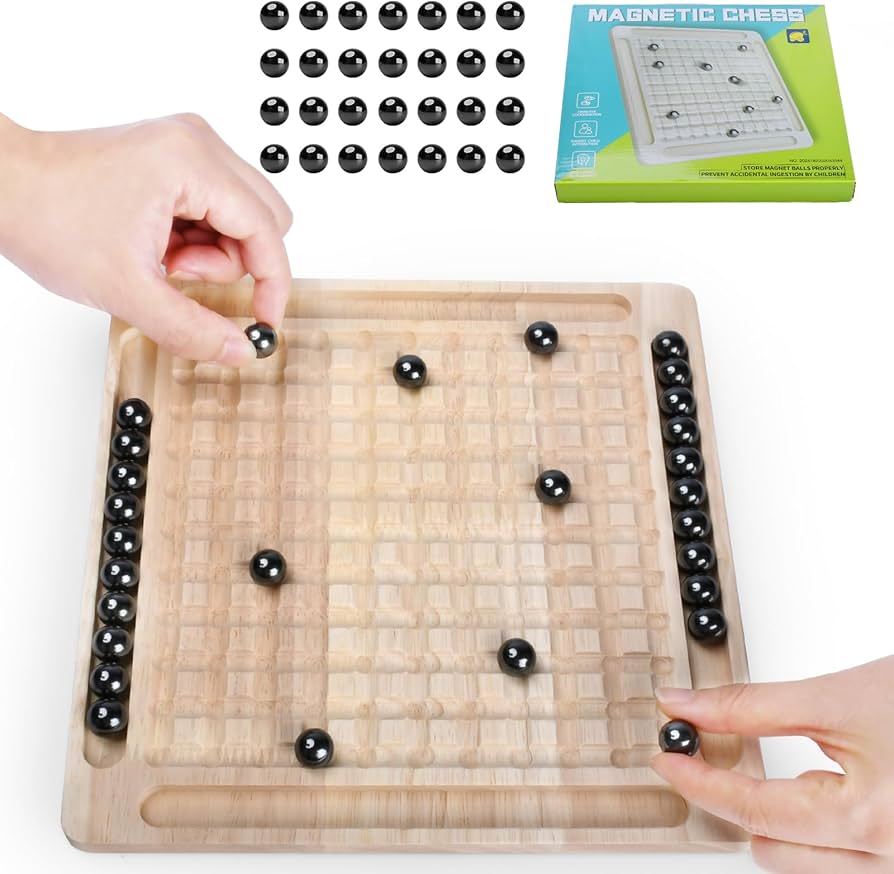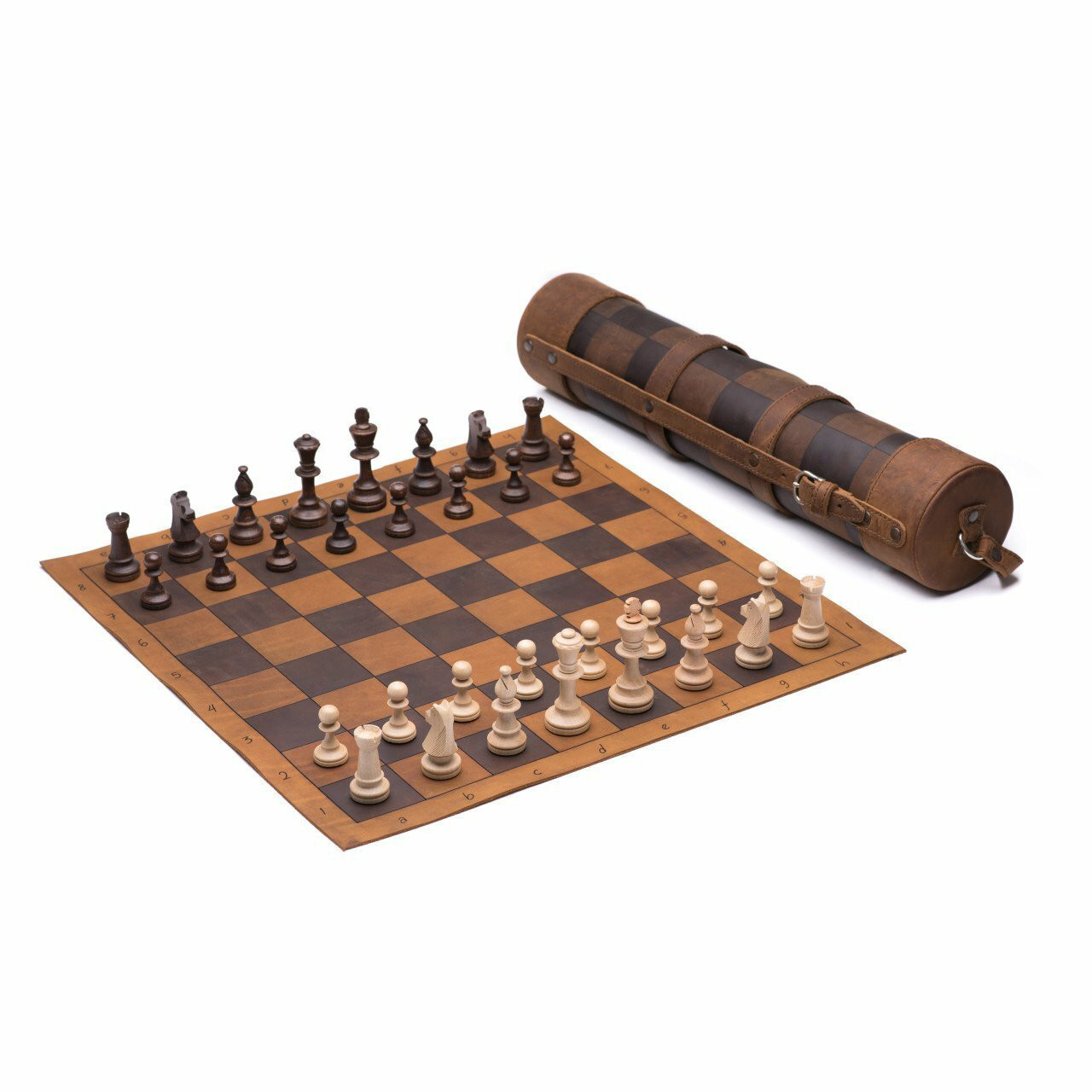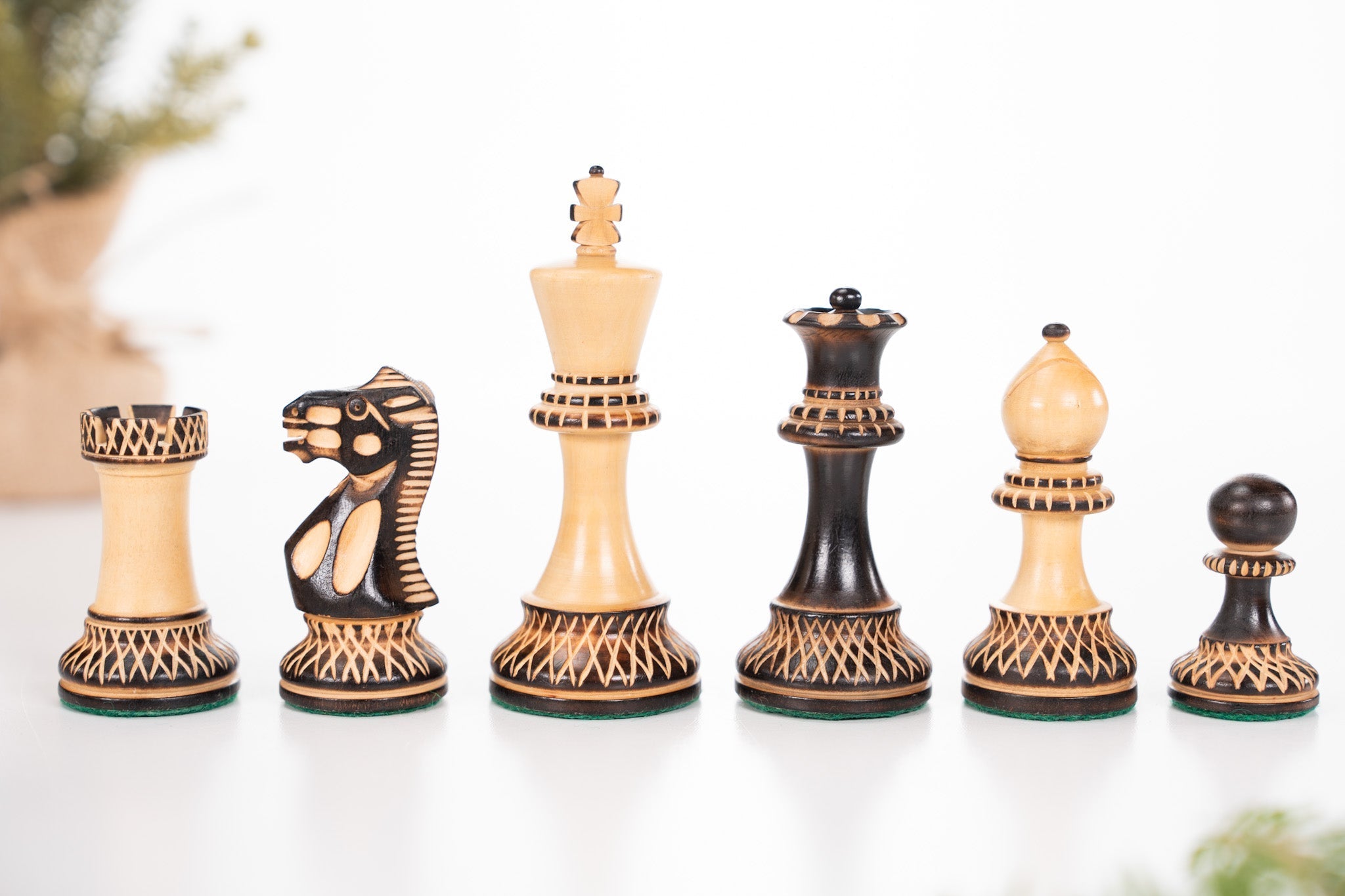To set up a chess board step by step, follow these simple guidelines. Start by placing the board correctly, then arrange the pieces in their specific positions.
Chess is a game of strategy and skill. Setting up the board correctly is the first step towards understanding this timeless game. If you’re new to chess, don’t worry. This guide will walk you through each step clearly and simply.
Whether you plan to play with friends or improve your skills, knowing how to set up the board is essential. By the end of this guide, you’ll be ready to play your first game with confidence. Let’s get started and place those pieces where they belong.
Introduction To Chess
Chess is a game of strategy and skill. It is played by millions around the world. Understanding the basics is key to enjoying the game. The first step is setting up the chess board correctly.
Brief History
Chess has a rich history dating back over 1,500 years. It originated in India and spread to Persia. Eventually, it reached Europe, where it evolved into the game we know today. The rules have changed over time, but the essence of chess remains.
Importance Of Setup
The setup of a chess board is crucial. It ensures a fair game. Each piece has a specific place on the board. Proper setup helps players start the game correctly. It avoids confusion and mistakes.
Chess Board Layout
The chess board layout is the first step to an exciting game. Knowing how to set up your board correctly is crucial. It ensures that every move is fair and follows the rules. Let’s break down the steps.
Board Orientation
First, you must orient the board correctly. Place the board so that each player has a white square on their right-hand side. This rule is key to starting the game fairly.
| Step | Description |
|---|---|
| 1 | Place the board between two players. |
| 2 | Ensure a white square is at each player’s right-hand corner. |
Square Identification
Next, let’s identify the squares. Chess boards are labeled with letters and numbers. The columns, called files, are labeled from ‘a’ to ‘h’. The rows, known as ranks, are numbered from 1 to 8.
Here’s a quick guide:
- The bottom-left square is ‘a1’.
- The top-right square is ‘h8’.
- Each square has a unique identifier like ‘c4’ or ‘e5’.
Knowing these labels helps you understand moves and strategies better.
Now, you are ready to start setting up your pieces!
Placing The Rooks
Start by placing the rooks on the chessboard. They go in the corners of the board, one in each corner. The white rooks occupy a1 and h1, while the black rooks go on a8 and h8.
Setting up a chessboard properly is crucial. The placement of the rooks is an important part of this process. Let’s dive into the details.Rook Position
Rooks go in the corners of the board. Each player has two rooks. Place one rook on the a1 square and the other on the h1 square. Do the same for the black rooks on the a8 and h8 squares. This setup ensures symmetry and balance.Role Of The Rooks
Rooks are powerful pieces. They can move horizontally or vertically across the board. This makes them valuable in both offense and defense. Controlling open files and ranks is key. Rooks often work together to dominate the board. They also play a crucial role in castling. This move helps protect the king and connect the rooks. Understanding the placement and role of rooks is essential. It can significantly influence your game strategy. “`Positioning The Knights
Setting up a chess board can be a fun task. One crucial part is placing the knights correctly. This step ensures your game starts right.
Knights are unique pieces. Their placement and movement can change the game. Let’s dive into how to position them.
Knight Placement
The knights start between the rooks and bishops. Place one knight on the b1 square for white. Place the other on g1. For black, place them on b8 and g8. These positions are essential for a balanced setup.
Knights’ Movement
Knights move in an L-shape. They move two squares in one direction and then one square perpendicular. This unique move helps them jump over other pieces.
Understanding their movement is key. Knights can control the board in surprising ways. Their jumps can create unexpected threats and defenses.
Placing The Bishops
Setting up a chessboard is a fundamental skill for all chess players. Each piece has its unique position and role. In this section, let’s focus on placing the bishops. Bishops are vital pieces with their own movements and strategic importance.
Bishop Location
Each player has two bishops. The white bishops and the black bishops are placed on specific squares. For white, the bishops go on the c1 and f1 squares. For black, they are placed on c8 and f8.
| Player | Bishop Locations |
|---|---|
| White | c1, f1 |
| Black | c8, f8 |
Remember, bishops always start on squares of the same color. The c1 and c8 bishops are on dark squares. The f1 and f8 bishops are on light squares.
Bishops’ Movement
Bishops move diagonally across the board. They can move any number of squares, but only on their color. This means a bishop on a dark square will always stay on dark squares. The same goes for bishops on light squares.
- Move any number of squares.
- Move diagonally only.
- Stay on the same color square.
Understanding the bishop’s movement helps you plan your strategy. They can control long diagonals and work well in open positions. Place your bishops carefully for maximum control and advantage.
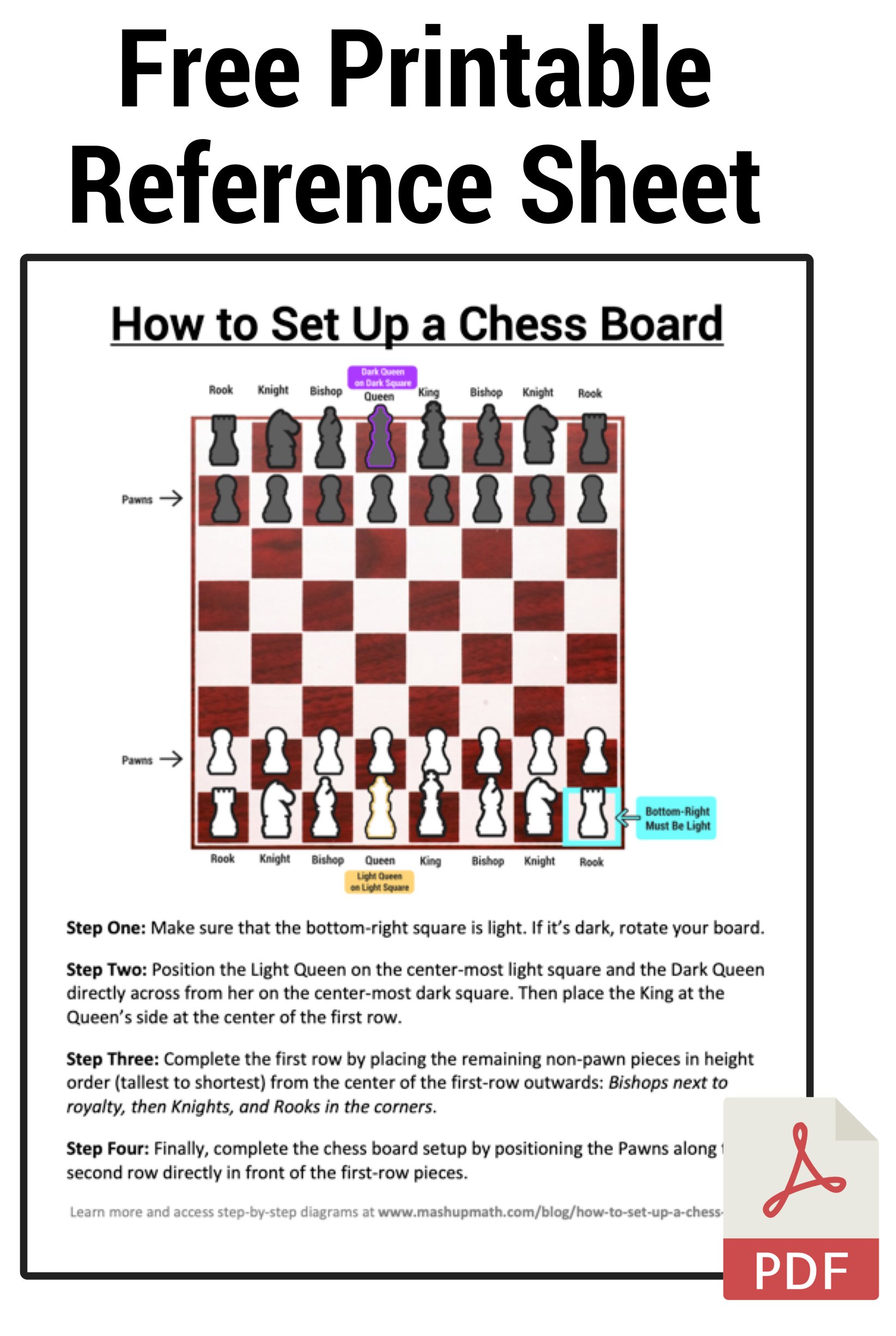
Credit: www.mashupmath.com
Positioning The Queen
Setting up a chess board can seem challenging at first. But with the right steps, it becomes simple. One key piece to place correctly is the queen. The queen’s position is crucial for a proper game setup.
Queen’s Starting Square
The queen always starts on her own color. For the white queen, place her on the d1 square. For the black queen, place her on the d8 square. Remember, “queen on color” is an easy way to recall this.
Place the white queen on the white square. Place the black queen on the black square. This basic rule ensures you set the board correctly every time.
Queen’s Movement
The queen is the most powerful piece in chess. She can move in any direction. She can move horizontally, vertically, and diagonally. The queen can move any number of squares. This makes her a versatile piece during the game.
Understanding the queen’s movement helps in planning strategies. Use her power to control the board. This can give you an advantage in your game.
By knowing the queen’s starting square and movement, you set up and play better. Follow these steps to ensure your chess board is ready for a great game.
Placing The King
Setting up a chess board might seem tricky at first, but it’s simple. One key piece is the King. Let’s explore how to place this crucial piece.
King’s Starting Square
The King starts on a specific square. For the white King, it is the e1 square. The black King starts on the e8 square. Always place the King on a square of its own color. This means white King on a white square and black King on a black square.
King’s Movement
Understanding the King’s movement is vital. The King can move one square in any direction. This includes up, down, left, right, and diagonally. But the King cannot move into a square that puts it in check.
The King is a valuable piece. Protect it at all costs. Knowing its movement helps you plan your strategy. It also helps in defending your King.
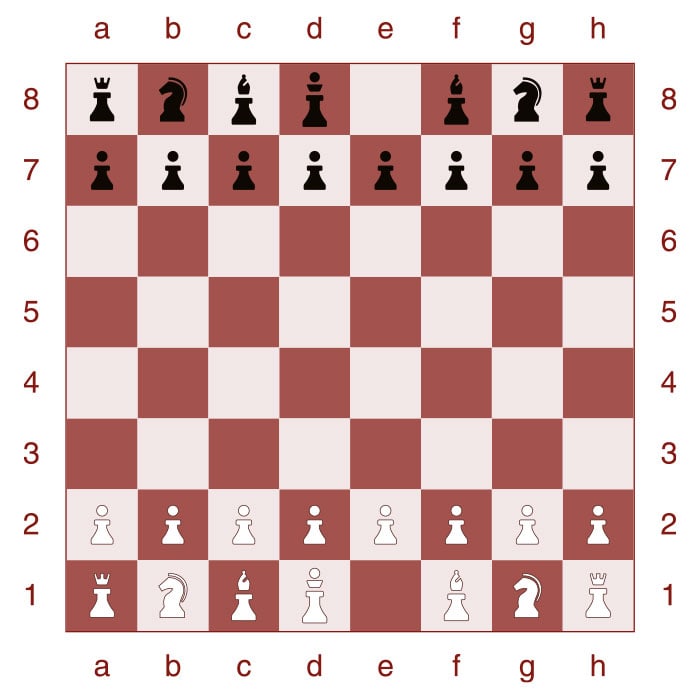
Credit: www.regencychess.co.uk
Arranging The Pawns
Setting up a chess board correctly is crucial for a fair game. The first step in arranging the chess pieces is placing the pawns. These pieces form the front line of your army. They may seem simple, but they play a vital role in your strategy.
Pawn Placement
Place the pawns on the second rank for each player. For white, position them on the second row from the bottom. For black, place them on the second row from the top.
Here’s a table to help you visualize the placement:
| White Pawns | Black Pawns |
|---|---|
| a2, b2, c2, d2, e2, f2, g2, h2 | a7, b7, c7, d7, e7, f7, g7, h7 |
Pawns’ Movement
Pawns move differently from other pieces. They move forward but capture diagonally. On their first move, they can move one or two squares forward. After that, they move one square at a time.
Here’s a quick list of their movements:
- First move: One or two squares forward
- Subsequent moves: One square forward
- Capturing: One square diagonally forward
Remember, pawns cannot move backward. They can promote to any piece upon reaching the opposite end of the board.
Understanding pawn placement and movement is essential for a good chess strategy. These pieces may seem basic, but they can become powerful.
Final Setup Check
Once you have placed all the pieces on the chess board, it’s time for the final setup check. This step ensures that every piece is in its correct starting position. A properly arranged board sets the stage for an engaging game of chess.
Ensuring Correct Positions
First, ensure the board is oriented correctly. The bottom-right square should be a light square. This is crucial for proper setup.
| Piece | Starting Position |
|---|---|
| Pawns | Second and seventh rows |
| Rooks | Corner squares |
| Knights | Next to the rooks |
| Bishops | Next to the knights |
| Queens | Center square matching their color |
| Kings | Remaining center square |
Double-check that each piece is on the correct square. This prevents misplacement errors.
Common Mistakes
- Incorrect board orientation: Ensure the bottom-right square is light.
- Queen placement: Place the queen on a square of her color.
- Pawns row: Make sure all pawns are in the second and seventh rows.
Avoid these mistakes to ensure a smooth start to your game. Correct placement is vital.
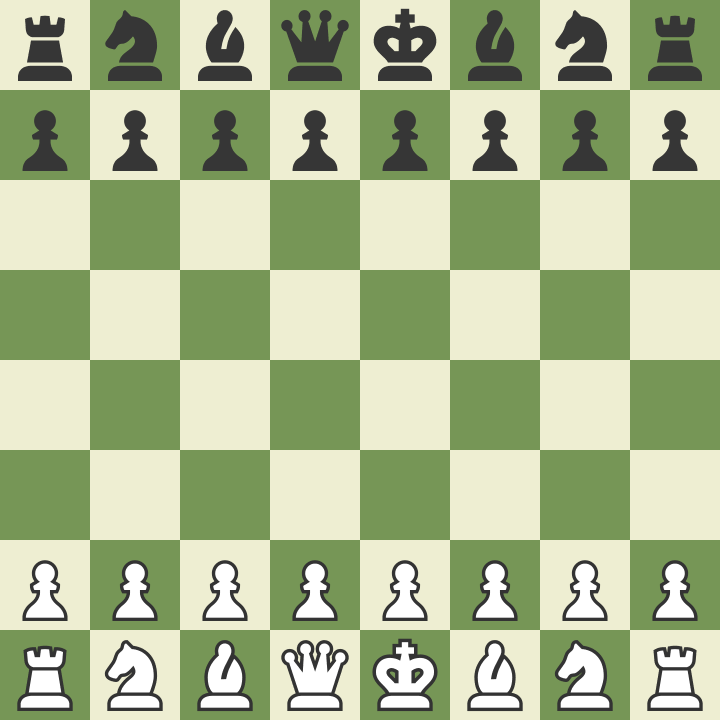
Credit: www.chess.com
Conclusion
Setting up a chess board is simple with these steps. Place the board correctly. Position the pieces in their starting spots. Now, you are ready to play. Enjoy the game and practice often. Chess sharpens your mind. Remember, every master was once a beginner.
So, keep learning and having fun. Happy playing!

